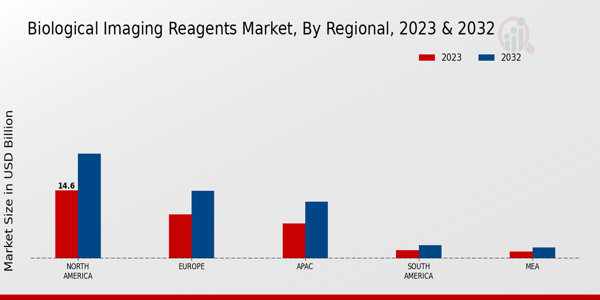The Biologic Imaging Reagents Market is experiencing significant growth driven by technological advancements and increasing applications in various research fields. Rising investments in biotechnology and pharmaceutical companies are fueling the demand for imaging reagents, as these tools are vital for understanding biological processes and drug development. Additionally, the growing focus on personalized medicine and the need for precise diagnostic tools act as key market drivers, fostering innovation in imaging technologies. As the market evolves, numerous opportunities are emerging that stakeholders can capture.
The integration of artificial intelligence and machine learning with imaging reagents presents a chance to enhance image analysis and processing capabilities.
In addition, the simultaneous increase of some chronic diseases indicates the need for advanced imaging solutions and renders the requirement for developing new reagents that suit a specific purpose on the part of companies. Such collaborations and partnerships involving research as well as academic institutions can also facilitate the development of new applications thus boosting the growth of the market further. Modern times have become marked by a prevalence of tendencies towards the creation of multi-modal imaging reagents for the imaging of several biological markers at once.
This not only improves the productivity of the research but also improves the quality of the diagnosed conditions. There is also a trend towards more ecological requirements, where producers wish to manufacture biocompatible reagents.
Equally noticeable is the trend of moving toward more automated imaging systems, as this increases efficiency in laboratories as well as time for research work. Taken together, these trends seem to indicate an active and evolving market, with new developments expected to transform the realm of biological imaging in the end.
Source: Primary Researc h, Secondary Research, Market Research Future Database and Analyst Review
The ongoing advancements in biologic imaging reagents are poised to enhance diagnostic accuracy and therapeutic monitoring, thereby potentially transforming patient care in the healthcare sector.
U.S. National Institutes of Health






















Leave a Comment